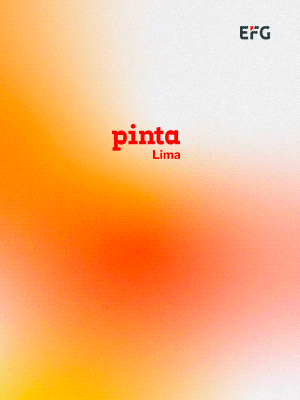ACCRETION: WORKS BY LATIN AMERICAN WOMEN
Santa Barbara Museum of Art presents the exhibition Accretion: Works by Latin American Women, with works from artists from the United States but with roots in Argentina, Colombia, Costa Rica, Cuba, Guatemala, Mexico and Peru.
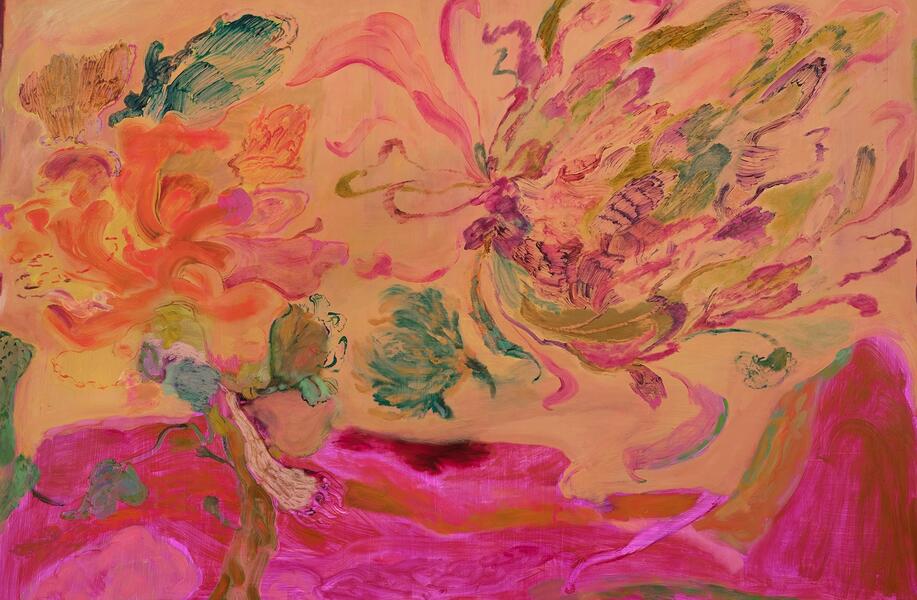
Like the pearl that forms from the accretion of materials over time, the works in this exhibition contain the aggregated experiences of the artists—women living and working in the United States but with roots in Argentina, Colombia, Costa Rica, Cuba, Guatemala, Mexico and Peru. However, unlike a pearl, their layers—comprised of earth, ceramic tiles, paint, photographs, stories, art history, and the artists' own lives as material—neither are smooth nor conceal themselves. Weaving a rich tapestry of diverse perspectives, Accretion's expressions of family bonds, immigration, labor and self-discovery draw attention to the intersected cultures, temporalities and histories that constitute the layers of being.
One standout piece is Patricia Iglesias Peco's Lavinia Mariposa (2024). In this work, Peco draws inspiration from the 1999 novel Reina Amelia by Marosa di Giorgio (Uruguayan, 1932 – 2004). The painting's title references the novel's mystical, enigmatic figure Lavinia, who is given the opportunity to work as a butterfly in a garden.
Allegra Pacheco's Untitled (Vessel with Glyphs) (2024) appears as a long-lost artifact, untouched for centuries. Its handmade form, glazed with copper and organic minerals, mimics the encrustations of seashells and sediment, referencing the passage of time. Carved into the surface are gladiator-like figures, which emulate the drill stances found in instructional manuals on boxing form and combinations.
-
Jackie Amézquita, Oro Negro (Black Gold), 2024. Soil sourced from Los Angeles neighborhoods, masa (corn dough), salt and cal (limestone) frame with copper. Courtesy of the artist and Charlie James Gallery, Los Angeles. Photo: 2024 Yubo Dong,
ofstudio. © Jackie Amézquita.
-
Allegra Pacheco, Untitled (Vessel with Glyphs), 2024. From the series "Bone Ash." Ceramic. Courtesy of Craig Krull Gallery and Sloan Projects. © Allegra Pacheco.
-
Jay Lynn Gomz, Niqhtsweeper, 2019. Acrylic on cardboard. Courtesy of the Artist and Charlie James Gallery, Los Angeles. © Jay Lynn Gomez. Photo: 2022 Yubo Dong, ofstudio
-
Patricia Iglesias Peco. Lvinia Mariposa, 2024. Oil on panel. Courtesy of the Artist and Fraçois Ghebaly. Photo: Paul Salveson.
-
Daiana Yasenia Alvarado, Lluvia, 2023. Ceramic. Courtesy of Diana Yesenia Alvarado and Jeffrey Deitch Los Angeles. Image courtesy of the artist and Jeffrey Deitch Los Angeles. Photo Charles White.
-
Jackie Amézquita, Oro Negro (Black Gold), 2024. Soil sourced from Los Angeles neighborhoods, masa (corn dough), salt and cal (limestone) frame with copper. Courtesy of the artist and Charlie James Gallery, Los Angeles. Photo: 2024 Yubo Dong,
ofstudio. © Jackie Amézquita.
-
Carlee Fernández, Hues from Brown to Pink, 2010. C-print, edition of 3. SBMA, Museum purchase, 2014.58. Image courtesy of the artist and Inman Gallery, all rights reserved to the artist.
In Jay Lynn Gomez's Nightsweeper (2019), a silhouette is thrown into relief by a storefront's brightness a partial example of chiaroscuro. The sweeper is suggested through swift brushwork similar to that of painters J.M.W. Turner (English, 1775-1851) and Eugène Delacroix (French, 1798-1863). The chosen canvas –humble cardboard– reflects the Chicana/a sensibility rasquachismo, which the artist describes as "making things with what you have." Despite the labor represented, this painting is not about work but about the person behind the work the individuals we encounter every day, whose output we enjoy but who often are unrecognized.
This exhibition also includes works by artists Carlee Fernández, Isabel Barbuzza, Estefania Ajcip, Ilana Savdie, Diana Yesenia Alvarado, Evelyn Quijas Godínez, Deanna Barahona, Jackie Amézquita, Harmonia Rosales, and Clare Rojas.
Related Topics
May interest you
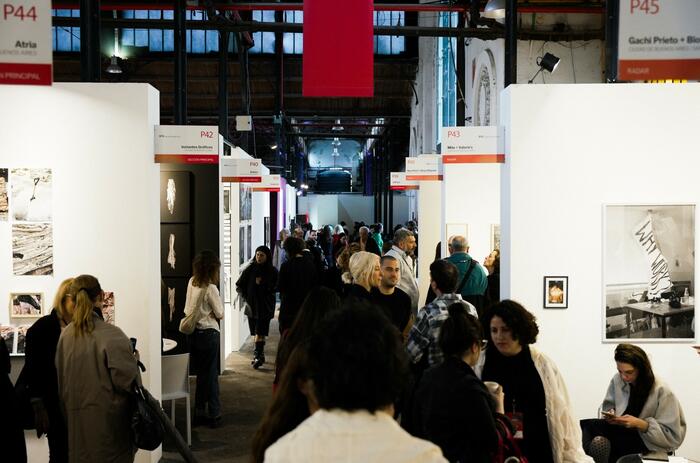
Pinta BAphoto closed its 20th anniversary at La Rural, Buenos Aires, Argentina, after a weekend that brought together the best of photography in the region and was a meeting point for gallery owners, artists, curators, collectors and photography lovers. The fair attracted more than 14,000 visitors during its three days open to the public.
PINTA BAphoto - THE EXPRESSION OF A REGION'S PHOTOGRAPHY
Pinta BAphoto closed its 20th anniversary at La Rural, Buenos Aires, Argentina, after a weekend that brought together the best of photography in the region and was a meeting point for gallery owners, artists, curators, collectors and photography lovers. The fair attracted more than 14,000 visitors during its three days open to the public.

Pinta BAphoto closed its 20th anniversary at La Rural, Buenos Aires, Argentina, after a weekend that brought together the best of photography in the region and was a meeting point for gallery owners, artists, curators, collectors and photography lovers. The fair attracted more than 14,000 visitors during its three days open to the public.
PINTA BAphoto - THE EXPRESSION OF A REGION'S PHOTOGRAPHY
Pinta BAphoto closed its 20th anniversary at La Rural, Buenos Aires, Argentina, after a weekend that brought together the best of photography in the region and was a meeting point for gallery owners, artists, curators, collectors and photography lovers. The fair attracted more than 14,000 visitors during its three days open to the public.
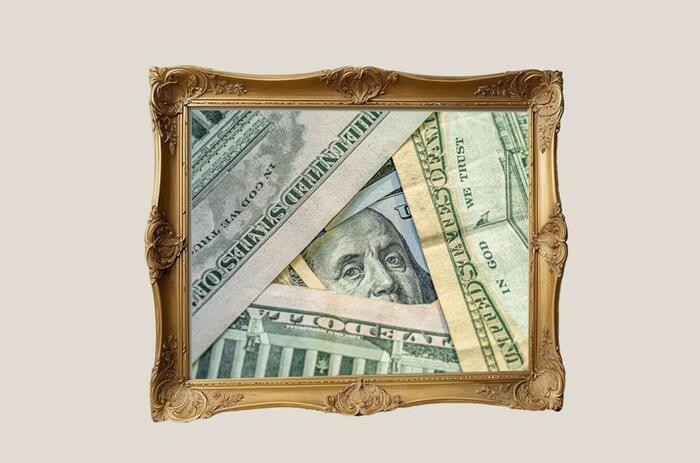
¿Inversión o pasión? Una guía para navegar por el mercado del arte (Investment or passion? A guide to navigating the art market) is the new book by María Sancho-Arroyo, where the author delves into the world of art collecting.
MARÍA SANCHO ARROYO'S NEW BOOK ON HOW TO NAVIGATE THE ART MARKET
¿Inversión o pasión? Una guía para navegar por el mercado del arte (Investment or passion? A guide to navigating the art market) is the new book by María Sancho-Arroyo, where the author delves into the world of art collecting.
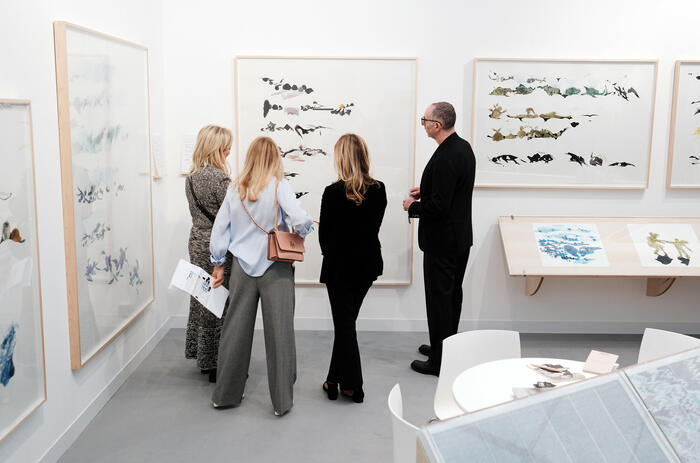
Mid-October marks a pivotal moment in the art world, as the spotlight shifts between London and Paris. First up is London, with Frieze opening on October 9th accompanied by a flurry of gallery openings and art events across the city. This season also sees important auctions, with leading houses hosting sales of Modern and Contemporary art.
A TALE OF TWO CITIES: LONDON VS. PARIS, THE ART WORLD’S ONGOING RIVALRY
Mid-October marks a pivotal moment in the art world, as the spotlight shifts between London and Paris. First up is London, with Frieze opening on October 9th accompanied by a flurry of gallery openings and art events across the city. This season also sees important auctions, with leading houses hosting sales of Modern and Contemporary art.
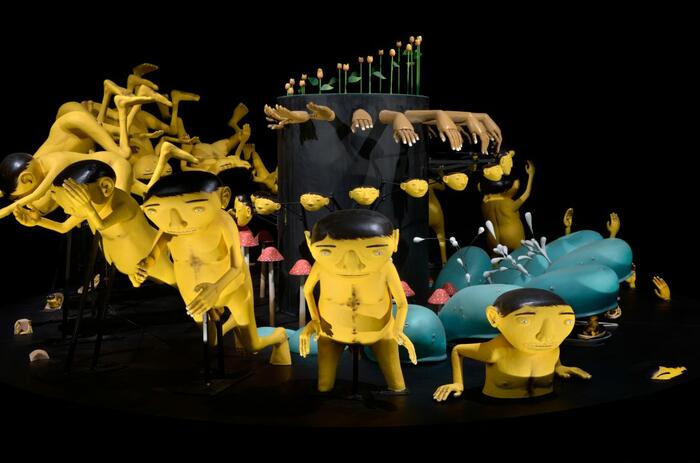
The Hirshhorn Museum will present the first US museum survey and largest US exhibition of work by identical twin brothers Gustavo and Otavio Pandolfo (b. São Paulo, Brazil, 1974), known globally as OSGEMEOS—Portuguese for “the twins.” The yearlong, full-floor presentation will bring together approximately 1,000 artworks, photographs, and archival materials to highlight the trajectory of their collaborative multidisciplinary practice, including the roots of their fantastical artistic language, inspired by their upbringing in urban Brazil.
OSGEMEOS: THE REAL AND THE FANTASTIC
The Hirshhorn Museum will present the first US museum survey and largest US exhibition of work by identical twin brothers Gustavo and Otavio Pandolfo (b. São Paulo, Brazil, 1974), known globally as OSGEMEOS—Portuguese for “the twins.” The yearlong, full-floor presentation will bring together approximately 1,000 artworks, photographs, and archival materials to highlight the trajectory of their collaborative multidisciplinary practice, including the roots of their fantastical artistic language, inspired by their upbringing in urban Brazil.
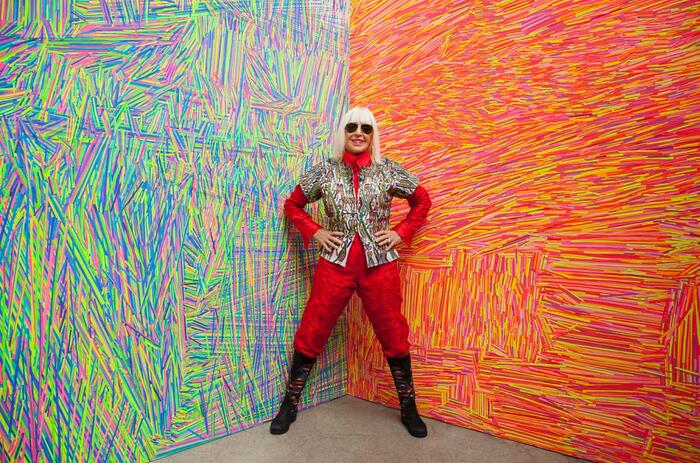
Intensity Life is Marta Minujín’s first retrospective exhibition in Europe, to be held at the Copenhagen Contemporary Museum.
MARTA MINUJIN’S FIRST RETROSPECTIVE EXHIBITION IN EUROPE
Intensity Life is Marta Minujín’s first retrospective exhibition in Europe, to be held at the Copenhagen Contemporary Museum.
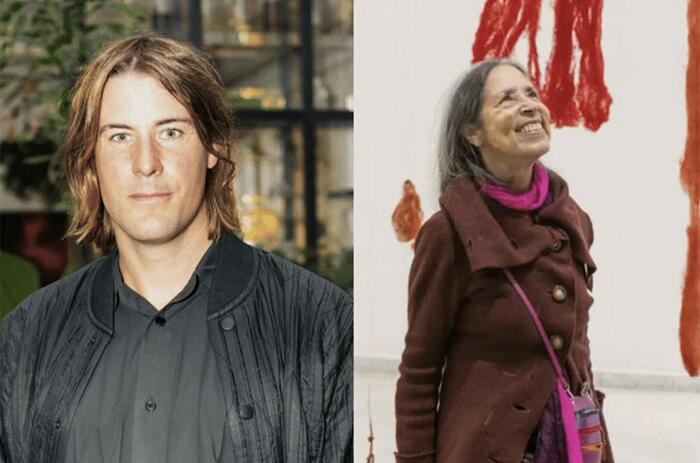
The Museum of Contemporary Art (MOCA) announced two winners of the inaugural Eric and Wendy Schmidt Environment and Art Prize: Julian Charrière (b. 1987 in Morges, Switzerland; lives and works in Berlin, Germany) and Cecilia Vicuña (b. 1948 in Santiago, Chile; lives and works in New York, NY and Santiago, Chile). Each artist will receive 100,000 USD and institutional support from MOCA to develop a commissioned project addressing the critical intersections of art, climate change, and environmental justice.
CECILIA VICUÑA & JULIAN CHARRIÈRE: INAUGURAL ERIC AND WENDY SCHMIDT ENVIRONMENT AND ART PRIZE
The Museum of Contemporary Art (MOCA) announced two winners of the inaugural Eric and Wendy Schmidt Environment and Art Prize: Julian Charrière (b. 1987 in Morges, Switzerland; lives and works in Berlin, Germany) and Cecilia Vicuña (b. 1948 in Santiago, Chile; lives and works in New York, NY and Santiago, Chile). Each artist will receive 100,000 USD and institutional support from MOCA to develop a commissioned project addressing the critical intersections of art, climate change, and environmental justice.

The Medellín Museum of Modern Art (MAMM) is seeking a new Chief Curator, who will build upon the Museum’s decade-long process of growth and transformation, contributing to its consolidation as a vital space for the cultural life of Medellín, Colombia, and the region. Applications open until December 1st, 2024.
OPEN CALL FOR CHIEF CURATOR AT MAMM
The Medellín Museum of Modern Art (MAMM) is seeking a new Chief Curator, who will build upon the Museum’s decade-long process of growth and transformation, contributing to its consolidation as a vital space for the cultural life of Medellín, Colombia, and the region. Applications open until December 1st, 2024.
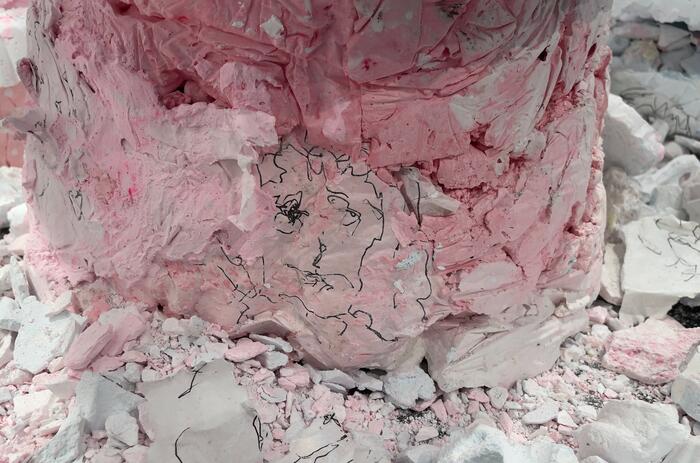
The Museo Nacional de Artes Visuales in Montevideo, Uruguay, presents the work of Mexican artist Adela Casacuberta. It is a site-specific installation Pink mushrooms in the museum's gardens and an exhibition of her most recent works.
ADELA CASACUBERTA: MYCELIUM, FRAGMENTATION AND TRANSFORMATION
The Museo Nacional de Artes Visuales in Montevideo, Uruguay, presents the work of Mexican artist Adela Casacuberta. It is a site-specific installation Pink mushrooms in the museum's gardens and an exhibition of her most recent works.
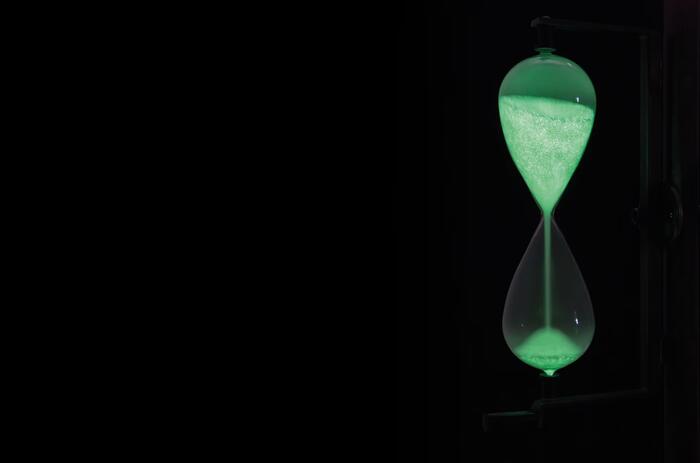
Museo Universitario Arte Contemporáneo (MUAC) presents Coordenadas claras para nuestra confusión (Clear coordinates for our confusion), by artist Julieta Aranda. This exhibition proposes to review the artist's production of the last decades from the perspective of her collaboration with time, understood not only as an object of research but also as an autonomous and active interlocutor. It is curated by Alejandra Labastida.
JULIETA ARANDA AT MUAC: DEALING WITH ORDER AND TIME
Museo Universitario Arte Contemporáneo (MUAC) presents Coordenadas claras para nuestra confusión (Clear coordinates for our confusion), by artist Julieta Aranda. This exhibition proposes to review the artist's production of the last decades from the perspective of her collaboration with time, understood not only as an object of research but also as an autonomous and active interlocutor. It is curated by Alejandra Labastida.
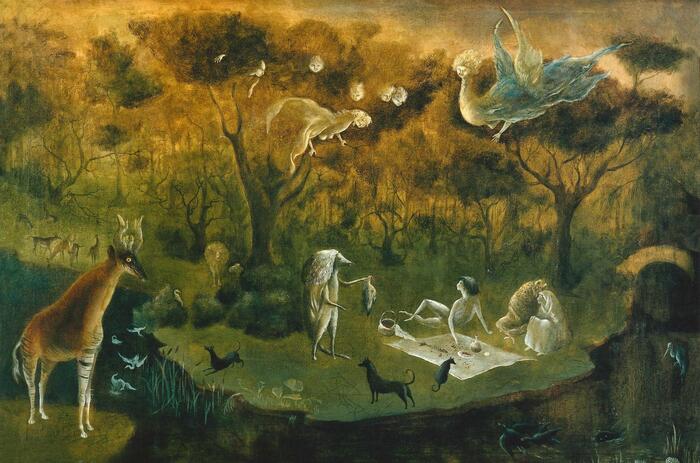
The Rose Art Museum at Brandeis University announces Leonora Carrington: Dream Weaver, the new exhibition opening on January 22, 2025. The exhibition, curated by Dr. Gannit Ankori, Henry and Lois Foster Director and Chief Curator, will feature over 30 of Carrington’s spellbinding artworks, loaned from private collections, which have rarely been on public display.
LEONORA CARRINGTON’S EXHIBITION AT ROSE ART MUSEUM
The Rose Art Museum at Brandeis University announces Leonora Carrington: Dream Weaver, the new exhibition opening on January 22, 2025. The exhibition, curated by Dr. Gannit Ankori, Henry and Lois Foster Director and Chief Curator, will feature over 30 of Carrington’s spellbinding artworks, loaned from private collections, which have rarely been on public display.

Pinta BAphoto closed its 20th anniversary at La Rural, Buenos Aires, Argentina, after a weekend that brought together the best of photography in the region and was a meeting point for gallery owners, artists, curators, collectors and photography lovers. The fair attracted more than 14,000 visitors during its three days open to the public.
PINTA BAphoto - THE EXPRESSION OF A REGION'S PHOTOGRAPHY
Pinta BAphoto closed its 20th anniversary at La Rural, Buenos Aires, Argentina, after a weekend that brought together the best of photography in the region and was a meeting point for gallery owners, artists, curators, collectors and photography lovers. The fair attracted more than 14,000 visitors during its three days open to the public.

¿Inversión o pasión? Una guía para navegar por el mercado del arte (Investment or passion? A guide to navigating the art market) is the new book by María Sancho-Arroyo, where the author delves into the world of art collecting.
MARÍA SANCHO ARROYO'S NEW BOOK ON HOW TO NAVIGATE THE ART MARKET
¿Inversión o pasión? Una guía para navegar por el mercado del arte (Investment or passion? A guide to navigating the art market) is the new book by María Sancho-Arroyo, where the author delves into the world of art collecting.

Mid-October marks a pivotal moment in the art world, as the spotlight shifts between London and Paris. First up is London, with Frieze opening on October 9th accompanied by a flurry of gallery openings and art events across the city. This season also sees important auctions, with leading houses hosting sales of Modern and Contemporary art.
A TALE OF TWO CITIES: LONDON VS. PARIS, THE ART WORLD’S ONGOING RIVALRY
Mid-October marks a pivotal moment in the art world, as the spotlight shifts between London and Paris. First up is London, with Frieze opening on October 9th accompanied by a flurry of gallery openings and art events across the city. This season also sees important auctions, with leading houses hosting sales of Modern and Contemporary art.

The Hirshhorn Museum will present the first US museum survey and largest US exhibition of work by identical twin brothers Gustavo and Otavio Pandolfo (b. São Paulo, Brazil, 1974), known globally as OSGEMEOS—Portuguese for “the twins.” The yearlong, full-floor presentation will bring together approximately 1,000 artworks, photographs, and archival materials to highlight the trajectory of their collaborative multidisciplinary practice, including the roots of their fantastical artistic language, inspired by their upbringing in urban Brazil.
OSGEMEOS: THE REAL AND THE FANTASTIC
The Hirshhorn Museum will present the first US museum survey and largest US exhibition of work by identical twin brothers Gustavo and Otavio Pandolfo (b. São Paulo, Brazil, 1974), known globally as OSGEMEOS—Portuguese for “the twins.” The yearlong, full-floor presentation will bring together approximately 1,000 artworks, photographs, and archival materials to highlight the trajectory of their collaborative multidisciplinary practice, including the roots of their fantastical artistic language, inspired by their upbringing in urban Brazil.

Intensity Life is Marta Minujín’s first retrospective exhibition in Europe, to be held at the Copenhagen Contemporary Museum.
MARTA MINUJIN’S FIRST RETROSPECTIVE EXHIBITION IN EUROPE
Intensity Life is Marta Minujín’s first retrospective exhibition in Europe, to be held at the Copenhagen Contemporary Museum.

The Museum of Contemporary Art (MOCA) announced two winners of the inaugural Eric and Wendy Schmidt Environment and Art Prize: Julian Charrière (b. 1987 in Morges, Switzerland; lives and works in Berlin, Germany) and Cecilia Vicuña (b. 1948 in Santiago, Chile; lives and works in New York, NY and Santiago, Chile). Each artist will receive 100,000 USD and institutional support from MOCA to develop a commissioned project addressing the critical intersections of art, climate change, and environmental justice.
CECILIA VICUÑA & JULIAN CHARRIÈRE: INAUGURAL ERIC AND WENDY SCHMIDT ENVIRONMENT AND ART PRIZE
The Museum of Contemporary Art (MOCA) announced two winners of the inaugural Eric and Wendy Schmidt Environment and Art Prize: Julian Charrière (b. 1987 in Morges, Switzerland; lives and works in Berlin, Germany) and Cecilia Vicuña (b. 1948 in Santiago, Chile; lives and works in New York, NY and Santiago, Chile). Each artist will receive 100,000 USD and institutional support from MOCA to develop a commissioned project addressing the critical intersections of art, climate change, and environmental justice.

The Medellín Museum of Modern Art (MAMM) is seeking a new Chief Curator, who will build upon the Museum’s decade-long process of growth and transformation, contributing to its consolidation as a vital space for the cultural life of Medellín, Colombia, and the region. Applications open until December 1st, 2024.
OPEN CALL FOR CHIEF CURATOR AT MAMM
The Medellín Museum of Modern Art (MAMM) is seeking a new Chief Curator, who will build upon the Museum’s decade-long process of growth and transformation, contributing to its consolidation as a vital space for the cultural life of Medellín, Colombia, and the region. Applications open until December 1st, 2024.

The Museo Nacional de Artes Visuales in Montevideo, Uruguay, presents the work of Mexican artist Adela Casacuberta. It is a site-specific installation Pink mushrooms in the museum's gardens and an exhibition of her most recent works.
ADELA CASACUBERTA: MYCELIUM, FRAGMENTATION AND TRANSFORMATION
The Museo Nacional de Artes Visuales in Montevideo, Uruguay, presents the work of Mexican artist Adela Casacuberta. It is a site-specific installation Pink mushrooms in the museum's gardens and an exhibition of her most recent works.

Museo Universitario Arte Contemporáneo (MUAC) presents Coordenadas claras para nuestra confusión (Clear coordinates for our confusion), by artist Julieta Aranda. This exhibition proposes to review the artist's production of the last decades from the perspective of her collaboration with time, understood not only as an object of research but also as an autonomous and active interlocutor. It is curated by Alejandra Labastida.
JULIETA ARANDA AT MUAC: DEALING WITH ORDER AND TIME
Museo Universitario Arte Contemporáneo (MUAC) presents Coordenadas claras para nuestra confusión (Clear coordinates for our confusion), by artist Julieta Aranda. This exhibition proposes to review the artist's production of the last decades from the perspective of her collaboration with time, understood not only as an object of research but also as an autonomous and active interlocutor. It is curated by Alejandra Labastida.

The Rose Art Museum at Brandeis University announces Leonora Carrington: Dream Weaver, the new exhibition opening on January 22, 2025. The exhibition, curated by Dr. Gannit Ankori, Henry and Lois Foster Director and Chief Curator, will feature over 30 of Carrington’s spellbinding artworks, loaned from private collections, which have rarely been on public display.
LEONORA CARRINGTON’S EXHIBITION AT ROSE ART MUSEUM
The Rose Art Museum at Brandeis University announces Leonora Carrington: Dream Weaver, the new exhibition opening on January 22, 2025. The exhibition, curated by Dr. Gannit Ankori, Henry and Lois Foster Director and Chief Curator, will feature over 30 of Carrington’s spellbinding artworks, loaned from private collections, which have rarely been on public display.

Pinta BAphoto closed its 20th anniversary at La Rural, Buenos Aires, Argentina, after a weekend that brought together the best of photography in the region and was a meeting point for gallery owners, artists, curators, collectors and photography lovers. The fair attracted more than 14,000 visitors during its three days open to the public.
PINTA BAphoto - THE EXPRESSION OF A REGION'S PHOTOGRAPHY
Pinta BAphoto closed its 20th anniversary at La Rural, Buenos Aires, Argentina, after a weekend that brought together the best of photography in the region and was a meeting point for gallery owners, artists, curators, collectors and photography lovers. The fair attracted more than 14,000 visitors during its three days open to the public.

¿Inversión o pasión? Una guía para navegar por el mercado del arte (Investment or passion? A guide to navigating the art market) is the new book by María Sancho-Arroyo, where the author delves into the world of art collecting.
MARÍA SANCHO ARROYO'S NEW BOOK ON HOW TO NAVIGATE THE ART MARKET
¿Inversión o pasión? Una guía para navegar por el mercado del arte (Investment or passion? A guide to navigating the art market) is the new book by María Sancho-Arroyo, where the author delves into the world of art collecting.

Mid-October marks a pivotal moment in the art world, as the spotlight shifts between London and Paris. First up is London, with Frieze opening on October 9th accompanied by a flurry of gallery openings and art events across the city. This season also sees important auctions, with leading houses hosting sales of Modern and Contemporary art.
A TALE OF TWO CITIES: LONDON VS. PARIS, THE ART WORLD’S ONGOING RIVALRY
Mid-October marks a pivotal moment in the art world, as the spotlight shifts between London and Paris. First up is London, with Frieze opening on October 9th accompanied by a flurry of gallery openings and art events across the city. This season also sees important auctions, with leading houses hosting sales of Modern and Contemporary art.

The Hirshhorn Museum will present the first US museum survey and largest US exhibition of work by identical twin brothers Gustavo and Otavio Pandolfo (b. São Paulo, Brazil, 1974), known globally as OSGEMEOS—Portuguese for “the twins.” The yearlong, full-floor presentation will bring together approximately 1,000 artworks, photographs, and archival materials to highlight the trajectory of their collaborative multidisciplinary practice, including the roots of their fantastical artistic language, inspired by their upbringing in urban Brazil.
OSGEMEOS: THE REAL AND THE FANTASTIC
The Hirshhorn Museum will present the first US museum survey and largest US exhibition of work by identical twin brothers Gustavo and Otavio Pandolfo (b. São Paulo, Brazil, 1974), known globally as OSGEMEOS—Portuguese for “the twins.” The yearlong, full-floor presentation will bring together approximately 1,000 artworks, photographs, and archival materials to highlight the trajectory of their collaborative multidisciplinary practice, including the roots of their fantastical artistic language, inspired by their upbringing in urban Brazil.

Intensity Life is Marta Minujín’s first retrospective exhibition in Europe, to be held at the Copenhagen Contemporary Museum.
MARTA MINUJIN’S FIRST RETROSPECTIVE EXHIBITION IN EUROPE
Intensity Life is Marta Minujín’s first retrospective exhibition in Europe, to be held at the Copenhagen Contemporary Museum.

The Museum of Contemporary Art (MOCA) announced two winners of the inaugural Eric and Wendy Schmidt Environment and Art Prize: Julian Charrière (b. 1987 in Morges, Switzerland; lives and works in Berlin, Germany) and Cecilia Vicuña (b. 1948 in Santiago, Chile; lives and works in New York, NY and Santiago, Chile). Each artist will receive 100,000 USD and institutional support from MOCA to develop a commissioned project addressing the critical intersections of art, climate change, and environmental justice.
CECILIA VICUÑA & JULIAN CHARRIÈRE: INAUGURAL ERIC AND WENDY SCHMIDT ENVIRONMENT AND ART PRIZE
The Museum of Contemporary Art (MOCA) announced two winners of the inaugural Eric and Wendy Schmidt Environment and Art Prize: Julian Charrière (b. 1987 in Morges, Switzerland; lives and works in Berlin, Germany) and Cecilia Vicuña (b. 1948 in Santiago, Chile; lives and works in New York, NY and Santiago, Chile). Each artist will receive 100,000 USD and institutional support from MOCA to develop a commissioned project addressing the critical intersections of art, climate change, and environmental justice.

The Medellín Museum of Modern Art (MAMM) is seeking a new Chief Curator, who will build upon the Museum’s decade-long process of growth and transformation, contributing to its consolidation as a vital space for the cultural life of Medellín, Colombia, and the region. Applications open until December 1st, 2024.
OPEN CALL FOR CHIEF CURATOR AT MAMM
The Medellín Museum of Modern Art (MAMM) is seeking a new Chief Curator, who will build upon the Museum’s decade-long process of growth and transformation, contributing to its consolidation as a vital space for the cultural life of Medellín, Colombia, and the region. Applications open until December 1st, 2024.

The Museo Nacional de Artes Visuales in Montevideo, Uruguay, presents the work of Mexican artist Adela Casacuberta. It is a site-specific installation Pink mushrooms in the museum's gardens and an exhibition of her most recent works.
ADELA CASACUBERTA: MYCELIUM, FRAGMENTATION AND TRANSFORMATION
The Museo Nacional de Artes Visuales in Montevideo, Uruguay, presents the work of Mexican artist Adela Casacuberta. It is a site-specific installation Pink mushrooms in the museum's gardens and an exhibition of her most recent works.

Museo Universitario Arte Contemporáneo (MUAC) presents Coordenadas claras para nuestra confusión (Clear coordinates for our confusion), by artist Julieta Aranda. This exhibition proposes to review the artist's production of the last decades from the perspective of her collaboration with time, understood not only as an object of research but also as an autonomous and active interlocutor. It is curated by Alejandra Labastida.
JULIETA ARANDA AT MUAC: DEALING WITH ORDER AND TIME
Museo Universitario Arte Contemporáneo (MUAC) presents Coordenadas claras para nuestra confusión (Clear coordinates for our confusion), by artist Julieta Aranda. This exhibition proposes to review the artist's production of the last decades from the perspective of her collaboration with time, understood not only as an object of research but also as an autonomous and active interlocutor. It is curated by Alejandra Labastida.

The Rose Art Museum at Brandeis University announces Leonora Carrington: Dream Weaver, the new exhibition opening on January 22, 2025. The exhibition, curated by Dr. Gannit Ankori, Henry and Lois Foster Director and Chief Curator, will feature over 30 of Carrington’s spellbinding artworks, loaned from private collections, which have rarely been on public display.
LEONORA CARRINGTON’S EXHIBITION AT ROSE ART MUSEUM
The Rose Art Museum at Brandeis University announces Leonora Carrington: Dream Weaver, the new exhibition opening on January 22, 2025. The exhibition, curated by Dr. Gannit Ankori, Henry and Lois Foster Director and Chief Curator, will feature over 30 of Carrington’s spellbinding artworks, loaned from private collections, which have rarely been on public display.

Pinta BAphoto closed its 20th anniversary at La Rural, Buenos Aires, Argentina, after a weekend that brought together the best of photography in the region and was a meeting point for gallery owners, artists, curators, collectors and photography lovers. The fair attracted more than 14,000 visitors during its three days open to the public.
PINTA BAphoto - THE EXPRESSION OF A REGION'S PHOTOGRAPHY
Pinta BAphoto closed its 20th anniversary at La Rural, Buenos Aires, Argentina, after a weekend that brought together the best of photography in the region and was a meeting point for gallery owners, artists, curators, collectors and photography lovers. The fair attracted more than 14,000 visitors during its three days open to the public.

¿Inversión o pasión? Una guía para navegar por el mercado del arte (Investment or passion? A guide to navigating the art market) is the new book by María Sancho-Arroyo, where the author delves into the world of art collecting.
MARÍA SANCHO ARROYO'S NEW BOOK ON HOW TO NAVIGATE THE ART MARKET
¿Inversión o pasión? Una guía para navegar por el mercado del arte (Investment or passion? A guide to navigating the art market) is the new book by María Sancho-Arroyo, where the author delves into the world of art collecting.

Mid-October marks a pivotal moment in the art world, as the spotlight shifts between London and Paris. First up is London, with Frieze opening on October 9th accompanied by a flurry of gallery openings and art events across the city. This season also sees important auctions, with leading houses hosting sales of Modern and Contemporary art.
A TALE OF TWO CITIES: LONDON VS. PARIS, THE ART WORLD’S ONGOING RIVALRY
Mid-October marks a pivotal moment in the art world, as the spotlight shifts between London and Paris. First up is London, with Frieze opening on October 9th accompanied by a flurry of gallery openings and art events across the city. This season also sees important auctions, with leading houses hosting sales of Modern and Contemporary art.

The Hirshhorn Museum will present the first US museum survey and largest US exhibition of work by identical twin brothers Gustavo and Otavio Pandolfo (b. São Paulo, Brazil, 1974), known globally as OSGEMEOS—Portuguese for “the twins.” The yearlong, full-floor presentation will bring together approximately 1,000 artworks, photographs, and archival materials to highlight the trajectory of their collaborative multidisciplinary practice, including the roots of their fantastical artistic language, inspired by their upbringing in urban Brazil.
OSGEMEOS: THE REAL AND THE FANTASTIC
The Hirshhorn Museum will present the first US museum survey and largest US exhibition of work by identical twin brothers Gustavo and Otavio Pandolfo (b. São Paulo, Brazil, 1974), known globally as OSGEMEOS—Portuguese for “the twins.” The yearlong, full-floor presentation will bring together approximately 1,000 artworks, photographs, and archival materials to highlight the trajectory of their collaborative multidisciplinary practice, including the roots of their fantastical artistic language, inspired by their upbringing in urban Brazil.

Intensity Life is Marta Minujín’s first retrospective exhibition in Europe, to be held at the Copenhagen Contemporary Museum.
MARTA MINUJIN’S FIRST RETROSPECTIVE EXHIBITION IN EUROPE
Intensity Life is Marta Minujín’s first retrospective exhibition in Europe, to be held at the Copenhagen Contemporary Museum.

The Museum of Contemporary Art (MOCA) announced two winners of the inaugural Eric and Wendy Schmidt Environment and Art Prize: Julian Charrière (b. 1987 in Morges, Switzerland; lives and works in Berlin, Germany) and Cecilia Vicuña (b. 1948 in Santiago, Chile; lives and works in New York, NY and Santiago, Chile). Each artist will receive 100,000 USD and institutional support from MOCA to develop a commissioned project addressing the critical intersections of art, climate change, and environmental justice.
CECILIA VICUÑA & JULIAN CHARRIÈRE: INAUGURAL ERIC AND WENDY SCHMIDT ENVIRONMENT AND ART PRIZE
The Museum of Contemporary Art (MOCA) announced two winners of the inaugural Eric and Wendy Schmidt Environment and Art Prize: Julian Charrière (b. 1987 in Morges, Switzerland; lives and works in Berlin, Germany) and Cecilia Vicuña (b. 1948 in Santiago, Chile; lives and works in New York, NY and Santiago, Chile). Each artist will receive 100,000 USD and institutional support from MOCA to develop a commissioned project addressing the critical intersections of art, climate change, and environmental justice.

The Medellín Museum of Modern Art (MAMM) is seeking a new Chief Curator, who will build upon the Museum’s decade-long process of growth and transformation, contributing to its consolidation as a vital space for the cultural life of Medellín, Colombia, and the region. Applications open until December 1st, 2024.
OPEN CALL FOR CHIEF CURATOR AT MAMM
The Medellín Museum of Modern Art (MAMM) is seeking a new Chief Curator, who will build upon the Museum’s decade-long process of growth and transformation, contributing to its consolidation as a vital space for the cultural life of Medellín, Colombia, and the region. Applications open until December 1st, 2024.

The Museo Nacional de Artes Visuales in Montevideo, Uruguay, presents the work of Mexican artist Adela Casacuberta. It is a site-specific installation Pink mushrooms in the museum's gardens and an exhibition of her most recent works.
ADELA CASACUBERTA: MYCELIUM, FRAGMENTATION AND TRANSFORMATION
The Museo Nacional de Artes Visuales in Montevideo, Uruguay, presents the work of Mexican artist Adela Casacuberta. It is a site-specific installation Pink mushrooms in the museum's gardens and an exhibition of her most recent works.

Museo Universitario Arte Contemporáneo (MUAC) presents Coordenadas claras para nuestra confusión (Clear coordinates for our confusion), by artist Julieta Aranda. This exhibition proposes to review the artist's production of the last decades from the perspective of her collaboration with time, understood not only as an object of research but also as an autonomous and active interlocutor. It is curated by Alejandra Labastida.
JULIETA ARANDA AT MUAC: DEALING WITH ORDER AND TIME
Museo Universitario Arte Contemporáneo (MUAC) presents Coordenadas claras para nuestra confusión (Clear coordinates for our confusion), by artist Julieta Aranda. This exhibition proposes to review the artist's production of the last decades from the perspective of her collaboration with time, understood not only as an object of research but also as an autonomous and active interlocutor. It is curated by Alejandra Labastida.

The Rose Art Museum at Brandeis University announces Leonora Carrington: Dream Weaver, the new exhibition opening on January 22, 2025. The exhibition, curated by Dr. Gannit Ankori, Henry and Lois Foster Director and Chief Curator, will feature over 30 of Carrington’s spellbinding artworks, loaned from private collections, which have rarely been on public display.
LEONORA CARRINGTON’S EXHIBITION AT ROSE ART MUSEUM
The Rose Art Museum at Brandeis University announces Leonora Carrington: Dream Weaver, the new exhibition opening on January 22, 2025. The exhibition, curated by Dr. Gannit Ankori, Henry and Lois Foster Director and Chief Curator, will feature over 30 of Carrington’s spellbinding artworks, loaned from private collections, which have rarely been on public display.

Pinta BAphoto closed its 20th anniversary at La Rural, Buenos Aires, Argentina, after a weekend that brought together the best of photography in the region and was a meeting point for gallery owners, artists, curators, collectors and photography lovers. The fair attracted more than 14,000 visitors during its three days open to the public.
PINTA BAphoto - THE EXPRESSION OF A REGION'S PHOTOGRAPHY
Pinta BAphoto closed its 20th anniversary at La Rural, Buenos Aires, Argentina, after a weekend that brought together the best of photography in the region and was a meeting point for gallery owners, artists, curators, collectors and photography lovers. The fair attracted more than 14,000 visitors during its three days open to the public.

¿Inversión o pasión? Una guía para navegar por el mercado del arte (Investment or passion? A guide to navigating the art market) is the new book by María Sancho-Arroyo, where the author delves into the world of art collecting.
MARÍA SANCHO ARROYO'S NEW BOOK ON HOW TO NAVIGATE THE ART MARKET
¿Inversión o pasión? Una guía para navegar por el mercado del arte (Investment or passion? A guide to navigating the art market) is the new book by María Sancho-Arroyo, where the author delves into the world of art collecting.

Mid-October marks a pivotal moment in the art world, as the spotlight shifts between London and Paris. First up is London, with Frieze opening on October 9th accompanied by a flurry of gallery openings and art events across the city. This season also sees important auctions, with leading houses hosting sales of Modern and Contemporary art.
A TALE OF TWO CITIES: LONDON VS. PARIS, THE ART WORLD’S ONGOING RIVALRY
Mid-October marks a pivotal moment in the art world, as the spotlight shifts between London and Paris. First up is London, with Frieze opening on October 9th accompanied by a flurry of gallery openings and art events across the city. This season also sees important auctions, with leading houses hosting sales of Modern and Contemporary art.

The Hirshhorn Museum will present the first US museum survey and largest US exhibition of work by identical twin brothers Gustavo and Otavio Pandolfo (b. São Paulo, Brazil, 1974), known globally as OSGEMEOS—Portuguese for “the twins.” The yearlong, full-floor presentation will bring together approximately 1,000 artworks, photographs, and archival materials to highlight the trajectory of their collaborative multidisciplinary practice, including the roots of their fantastical artistic language, inspired by their upbringing in urban Brazil.
OSGEMEOS: THE REAL AND THE FANTASTIC
The Hirshhorn Museum will present the first US museum survey and largest US exhibition of work by identical twin brothers Gustavo and Otavio Pandolfo (b. São Paulo, Brazil, 1974), known globally as OSGEMEOS—Portuguese for “the twins.” The yearlong, full-floor presentation will bring together approximately 1,000 artworks, photographs, and archival materials to highlight the trajectory of their collaborative multidisciplinary practice, including the roots of their fantastical artistic language, inspired by their upbringing in urban Brazil.

Intensity Life is Marta Minujín’s first retrospective exhibition in Europe, to be held at the Copenhagen Contemporary Museum.
MARTA MINUJIN’S FIRST RETROSPECTIVE EXHIBITION IN EUROPE
Intensity Life is Marta Minujín’s first retrospective exhibition in Europe, to be held at the Copenhagen Contemporary Museum.

The Museum of Contemporary Art (MOCA) announced two winners of the inaugural Eric and Wendy Schmidt Environment and Art Prize: Julian Charrière (b. 1987 in Morges, Switzerland; lives and works in Berlin, Germany) and Cecilia Vicuña (b. 1948 in Santiago, Chile; lives and works in New York, NY and Santiago, Chile). Each artist will receive 100,000 USD and institutional support from MOCA to develop a commissioned project addressing the critical intersections of art, climate change, and environmental justice.
CECILIA VICUÑA & JULIAN CHARRIÈRE: INAUGURAL ERIC AND WENDY SCHMIDT ENVIRONMENT AND ART PRIZE
The Museum of Contemporary Art (MOCA) announced two winners of the inaugural Eric and Wendy Schmidt Environment and Art Prize: Julian Charrière (b. 1987 in Morges, Switzerland; lives and works in Berlin, Germany) and Cecilia Vicuña (b. 1948 in Santiago, Chile; lives and works in New York, NY and Santiago, Chile). Each artist will receive 100,000 USD and institutional support from MOCA to develop a commissioned project addressing the critical intersections of art, climate change, and environmental justice.

The Medellín Museum of Modern Art (MAMM) is seeking a new Chief Curator, who will build upon the Museum’s decade-long process of growth and transformation, contributing to its consolidation as a vital space for the cultural life of Medellín, Colombia, and the region. Applications open until December 1st, 2024.
OPEN CALL FOR CHIEF CURATOR AT MAMM
The Medellín Museum of Modern Art (MAMM) is seeking a new Chief Curator, who will build upon the Museum’s decade-long process of growth and transformation, contributing to its consolidation as a vital space for the cultural life of Medellín, Colombia, and the region. Applications open until December 1st, 2024.

The Museo Nacional de Artes Visuales in Montevideo, Uruguay, presents the work of Mexican artist Adela Casacuberta. It is a site-specific installation Pink mushrooms in the museum's gardens and an exhibition of her most recent works.
ADELA CASACUBERTA: MYCELIUM, FRAGMENTATION AND TRANSFORMATION
The Museo Nacional de Artes Visuales in Montevideo, Uruguay, presents the work of Mexican artist Adela Casacuberta. It is a site-specific installation Pink mushrooms in the museum's gardens and an exhibition of her most recent works.

Museo Universitario Arte Contemporáneo (MUAC) presents Coordenadas claras para nuestra confusión (Clear coordinates for our confusion), by artist Julieta Aranda. This exhibition proposes to review the artist's production of the last decades from the perspective of her collaboration with time, understood not only as an object of research but also as an autonomous and active interlocutor. It is curated by Alejandra Labastida.
JULIETA ARANDA AT MUAC: DEALING WITH ORDER AND TIME
Museo Universitario Arte Contemporáneo (MUAC) presents Coordenadas claras para nuestra confusión (Clear coordinates for our confusion), by artist Julieta Aranda. This exhibition proposes to review the artist's production of the last decades from the perspective of her collaboration with time, understood not only as an object of research but also as an autonomous and active interlocutor. It is curated by Alejandra Labastida.

The Rose Art Museum at Brandeis University announces Leonora Carrington: Dream Weaver, the new exhibition opening on January 22, 2025. The exhibition, curated by Dr. Gannit Ankori, Henry and Lois Foster Director and Chief Curator, will feature over 30 of Carrington’s spellbinding artworks, loaned from private collections, which have rarely been on public display.
LEONORA CARRINGTON’S EXHIBITION AT ROSE ART MUSEUM
The Rose Art Museum at Brandeis University announces Leonora Carrington: Dream Weaver, the new exhibition opening on January 22, 2025. The exhibition, curated by Dr. Gannit Ankori, Henry and Lois Foster Director and Chief Curator, will feature over 30 of Carrington’s spellbinding artworks, loaned from private collections, which have rarely been on public display.

